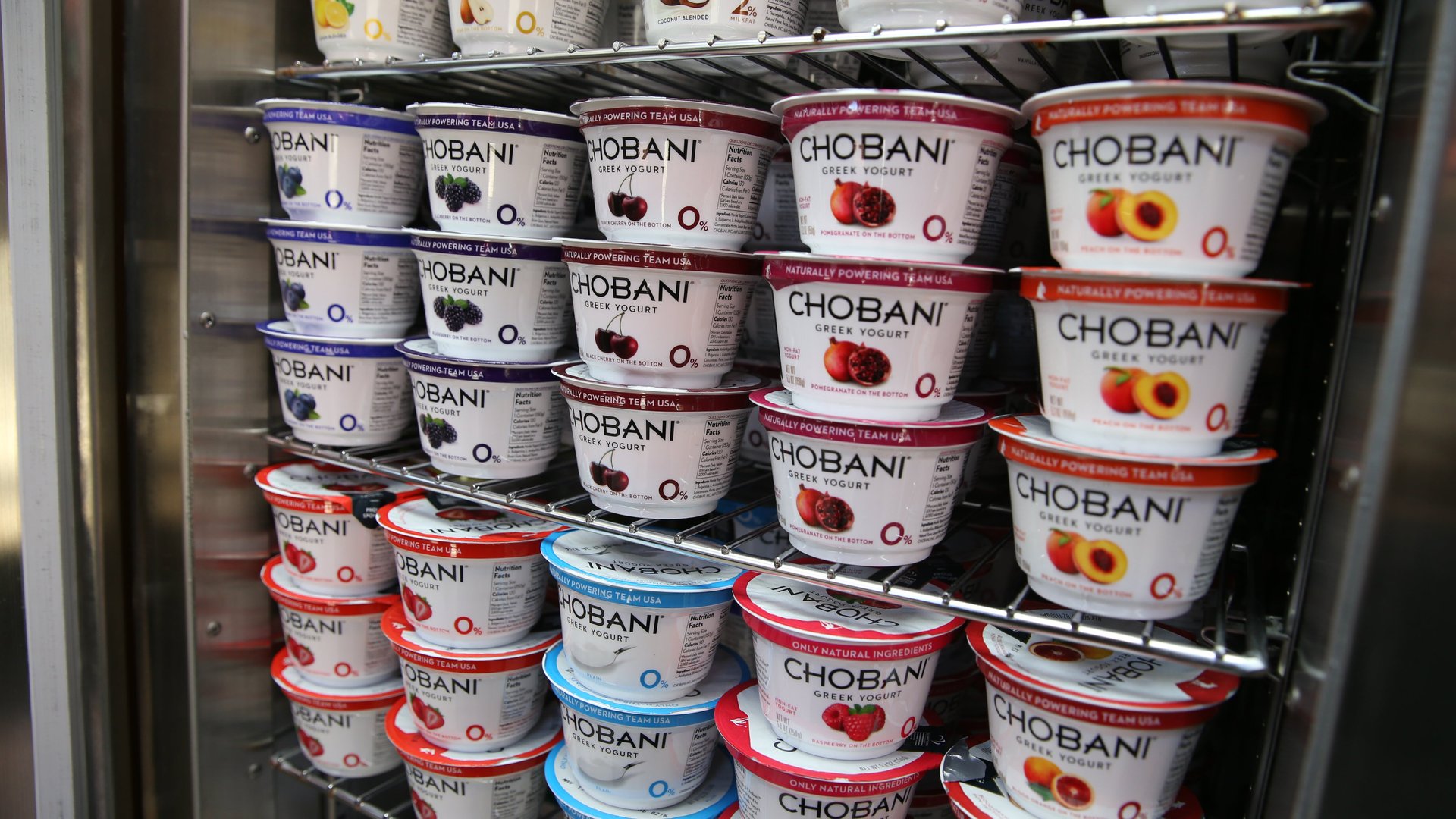Step into virtually any supermarket and the yogurt wars are in full swing
It’s getting a lot hotter in the refrigerated zone of the supermarket, and not because you can now buy yogurt made with Sriracha.


It’s getting a lot hotter in the refrigerated zone of the supermarket, and not because you can now buy yogurt made with Sriracha.
The yogurt wars are in full swing in the US. It’s a fast-paced, quickly-changing, promotional battlefield that in just five years has upended a multi-billion industry, giving way to dozens of new competitors and making yogurt the most cutthroat section of the grocery store.
That’s a big change from before 2010, when the yogurt aisle was mostly undisturbed territory. There were options, of course, but General Mills-owned Yoplait and Dannon commanded the scene with only a handful of flavors, including strawberry, blueberry and vanilla.
Then things changed.
Responding to a growing body of science, people began demanding yogurt with less sugar, more protein and assurance that the ingredients would be natural. That transformed the supermarket yogurt section into a cage match between brands. While people may not be eating more yogurt, they are demanding new styles, new flavors and even yogurt that dispenses with farm animals altogether. And they’re paying more for it.
Dannon introduced Activia, in 2010 the Greek yogurt boom ushered in Chobani and Fage, and yogurts aimed directly at children gave us Danimals, GoGurt and Stonyfield’s YoKids. Brands such as Siggi’s, Noosa and Skyr rounded out the category, offering styles from as far away as Iceland and Australia.
“Icelandic? Organic? Grass-fed? I mean it’s ridiculous, just too many choices,” said Bob Goldin, a food industry consultant at Technomics. The proliferation of brands risks making the yogurt aisle look like the toothpaste and detergent sections where, “all you’re doing is shifting dollars around…just different packages and different flavors,” he said.
Making regular yogurt is a simple affair, done by using bacteria to convert milk sugar (lactose) to lactic acid. That thickens the milk, which can then be flavored. To make Greek yogurt (which is lower in sugar and has fewer carbohydrates), producers strain the yogurt to remove its whey.
To be sure, the large brands still dominate the yogurt world. Dannon and General Mills remain at the top, but now they share their roughly 90% of the market with newcomer Chobani and a host of store-brand yogurts (which increasingly aim to be premium products), according to people in the industry.
“We’ve seen double-digit baseline declines on our yogurt business, which is due to competitive activity,” said Jeff Harmening, a chief operating officer at General Mills during a March 23 investor call.
That competition won’t likely let up anytime soon, especially as the US millennial population continues to demand sustainably produced foods, said Michael Gould, food technologist at WhiteWave Foods, a company focused on plant-based foods, including yogurt.
Gould said the technology needed to make yogurt that is more environmentally friendly and tastes good exists, and that it could lead the next wave of disruption. Most yogurt now is made from cow’s milk, but it could be made from plant-based milks such as almond, banana or soy. Animal-based food production takes up more land and energy than plant-based food production. Why feed a cow plants, then milk the cow when you can just skip the cow?
“People are focusing on what goes into their food,” he said. ”I don’t see that going away.”